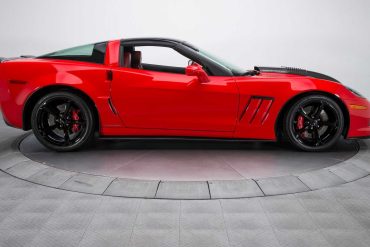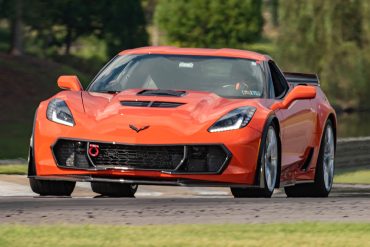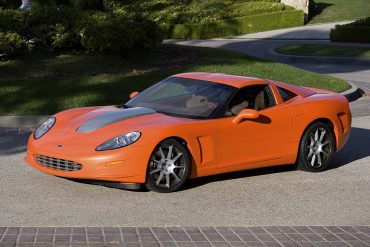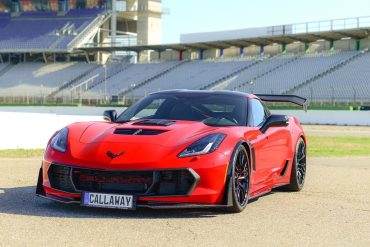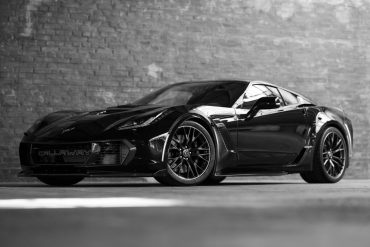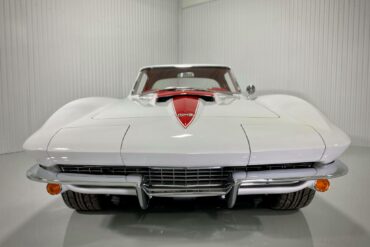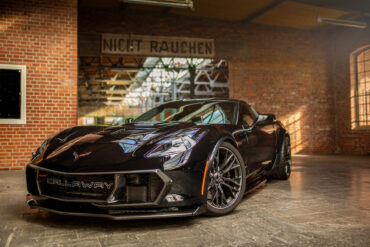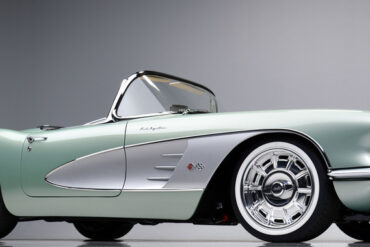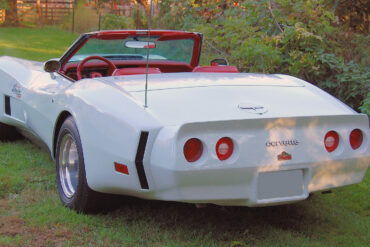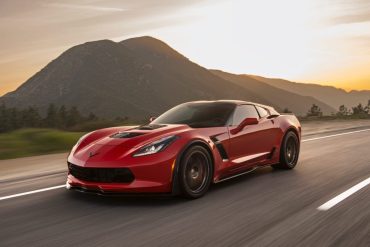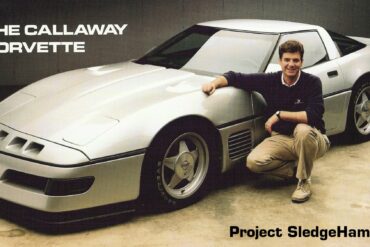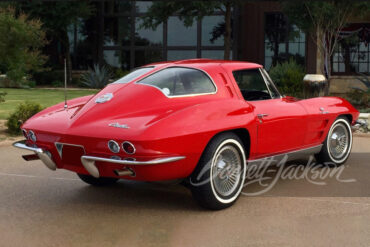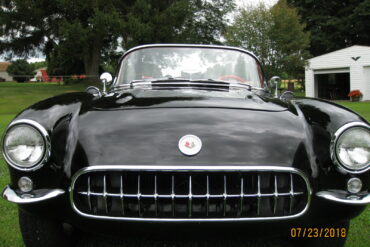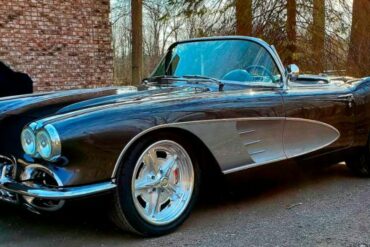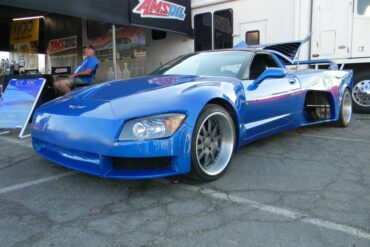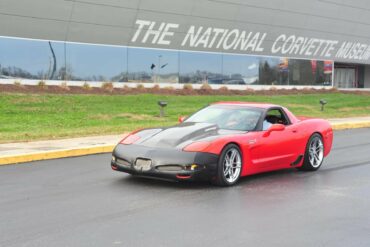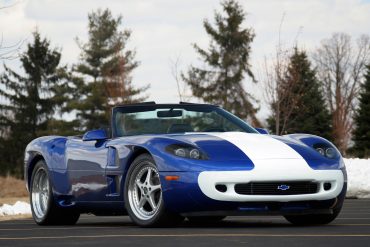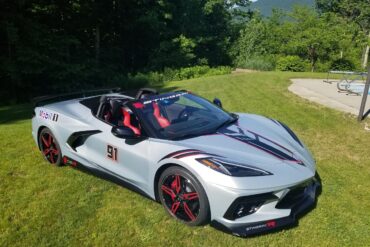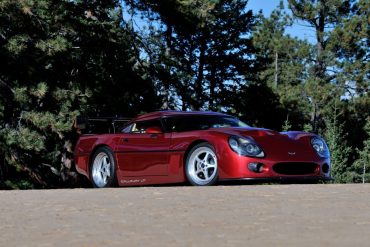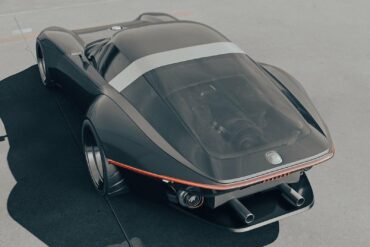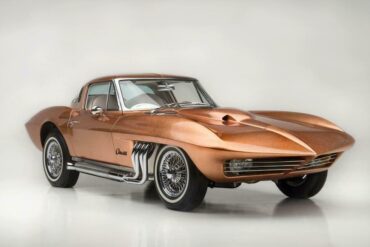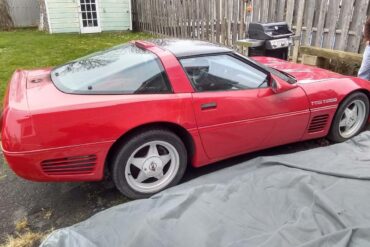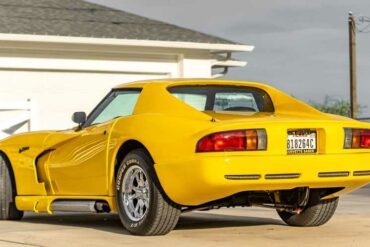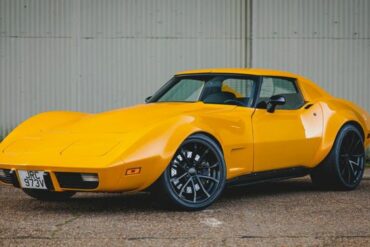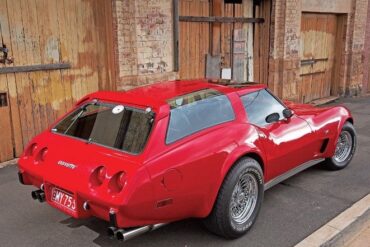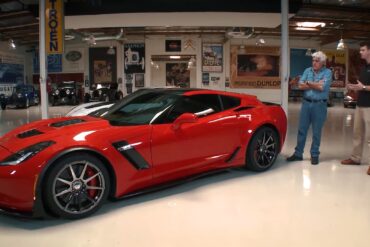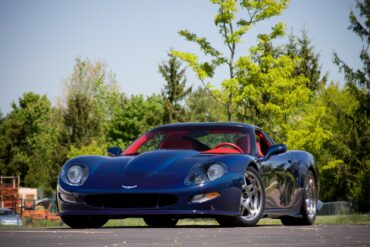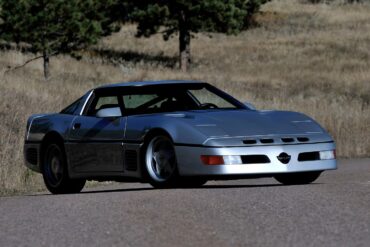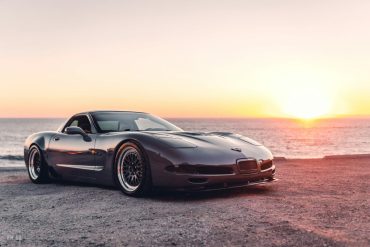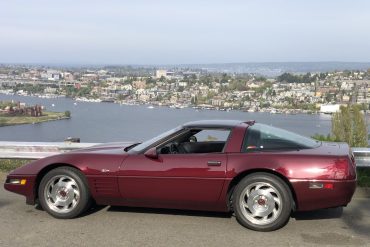The 2005-2013 Callaway Corvette was a specialist version of the C6 Corvette, built by Callaway Cars expert craftsmen and sold through selected Callaway/Chevrolet dealers. The 17th “C-Project” undertaken by Callaway first produced naturally-aspirated SuperNatural™ 450, 461, 490 (6.0L) and 550 (6.8L & 7.0L) horsepower Callaway Corvettes. In February 2006, Callaway returned to its positive manifold pressure roots, introducing Callaway “SuperCharged” Corvettes.
For the 2014 model year, the Chevrolet team sculpted the seventh-generation Corvette into the most sophisticated, most feature-packed Corvette produced to date. Facing a daunting challenge, new technology enabled Callaway engineers to produce breathtaking power with seamless transition into and out of positive manifold pressure. Entirely new, Callaway’s patented GenThree supercharger design improved airflow quality and increased charge air cooling capacity.
The Callaway C16 was Callaway’s 16th major automotive project. It was a limited production, bespoke automobile, built to order, by what the Press called “the best specialist engineers in the business”. These cars are seriously fast, beautiful, and exclusive. The C16 was a direct competitor for the Porsche GT3, the Lamborghini Murcielago, the Ferrari 599 GTB. It was both faster and more capable than its competitors, at less cost.
Callaway Competition has constructed some of the most successful GT3 race cars in history. Competing against the world’s premier marques, Callaway is currently recognized as the most successful race team of the ADAC GT Masters series. To celebrate Callaway Competition’s 25th anniversary, we’re building 25 unique, specially-equipped “Callaway Champion” road cars. The Z06-based Champions are built by our expert craftsmen.
The 25th Anniversary Edition is a hardened up version of Callaway's Corvette SC757, which in turn is based on a C7-generation Corvette Z06. It features a supercharged V8 that pumps out 757-horsepower and 777 pound-feet of torque. The supercharger is a GenThree Callaway unit with the company's TripleCooled intercooler system. A high-flow intake system feeds that beast. Callaway's Level Two HD Cooling System also helps it avoid the overheating issues that plagued C7 Z06s.
There are those that restore cars as close as possible to original condition, which is and of itself a noble...
When it comes to modifying a Corvette, there are a few things to think about before even thinking about going...
It’s no secret that Kevin Hart loves his classics and this was made even more clear when he dropped $825,000...
The Duntov Turbo was built as a partnership between American Custom Industries (ACI), a company known for building replacement Corvette body panels, and Zora Arkus-Duntov. It was developed as a highly-stylized convertible sports car based on the production model Corvette. Each of the special Duntov Turbo's also came with a turbocharged V8.
In the tradition of coach built shooting brakes, Callaway offers the AeroWagen for any version of the C7 Corvette Coupe. Its components can be fitted to the standard production C7, the Callaway SC627 Stingray or Grand Sport, or the Callaway SC757 Z06. The AeroWagen hatch assembly is a part-for-part replacement of the original equipment Corvette rear hatch, using the original hardware and latching mechanisms. It operates in an identical fashion.
Up for sale is a very special piece of Corvette history, the 1988 Corvette Callaway SledgeHammer #51 on BringATrailer. It’s...
One of the most anticipated Corvette auctions is coming to the world-renowned Barrett-Jackson Las Vegas auction June 17-19 2021, held in the West Hall of the Las Vegas Convention Center (LVCC).
Through the Sell My Corvette feature on our website here, a beautiful 1957 Corvette C1 restomod has become available for...
1961 Corvette Restomod Sells for $352k at Mecum Poll any group of Corvette enthusiasts with the question “which is better,...
This Corvette Powered, Twin-Engine GT-55C Super Super Car Is Something to Behold Have you ever heard of Gordon Tronson? If...
Mallett Performance Has Created Some Truly Remarkable Corvettes (and other vehicles too!) If you are familiar with Corvettes, then it...
To understand why the Guldstrand GS-90 coupe and convertible differ so much, keep in mind that during the course of the C4 development cycle, no ZR-1 convertibles were planned, so the base C4 convertible had to be used in building a GS-90 Nassau Roadster, as it was called. The coupe, however, had the advantage of using the ZR-1 platform right from the get-go.
When it was first revealed, it is well known that the Corvette C8’s styling was a radical departure from previous...
The offspring of collaboration between Corvette performance guru Reeves Callaway and designer Paul Deutschman, the Super Speedster LM is an astonishing step up on the original Speedster, taking full advantage of the ZR1’s Lotus-engineered, all-aluminum DOHC engine and 6-speed manual transmission. One of only three twin turbocharged and intercooled LT5 engines built by Callaway, it delivers a pavement-shredding 766 HP.
And Now For Something Completely Different….an Insanely Cool Corvette-Inspired Porsche 911 The rivalry between Corvette and Porsche is as old...
The "Asteroid" started life as a 1963 Chevy Corvette. It was ordered by mechanical engineer and renowned mid-century speed boat racer Bob Nordskog, sans any exterior paint save for a primer coat. Instead, the car was shipped directed to Barris Kustoms with instructions for Barris to transform the brand-new Corvette into a more radical version of itself.
We Found a 1989 Callaway Twin Turbo Corvette For Sale on Craigslist – It’s Almost Too Good To Be True!...
A Bizarre-Yet-Awesome Viper Body Kit For Your Third-Generation Corvette Gives You the “BEST” Of Both Worlds If You’ve Ever Considered...
FOR SALE: A Stunning 1976 Corvette Restomod One of the biggest criticisms repeatedly slung at mid-seventies Corvette is this: they...
The Chevrolet Corvette Sportwagon was never actually built by Chevrolet, it was an aftermarket kit developed for the C3 Corvette that solved its single biggest problem – the total lack of useable trunk space. When the third generation Corvette was released in 1967 it proved popular thanks to its shark-inspired styling. The one key drawback was the fact that there was no trunk lid, and the small trunk area was only accessible through the interior of the car behind the seats.
Jay Leno gives an in-depth look at the 2016 Callaway Corvette Aerowagen that has impressive 757 horsepower!...
The C12 was introduced at the 1997 Geneva Auto Show as was one of the highlights of the show. It was considered...
Based on a 1988 Chevrolet Corvette, the Sledgehammer was designed and manufactured by Corvette aficionado and legend Reeves Callaway. Callaway had already become known...
Upon its release in late 1996, the C5 became an instant favorite of Corvette enthusiasts and critics alike. The fifth-generation...
Few accessories accentuate the C4 Corvette’s natural appeal quite like an attractive set of custom rims. In fact, one’s eye...


